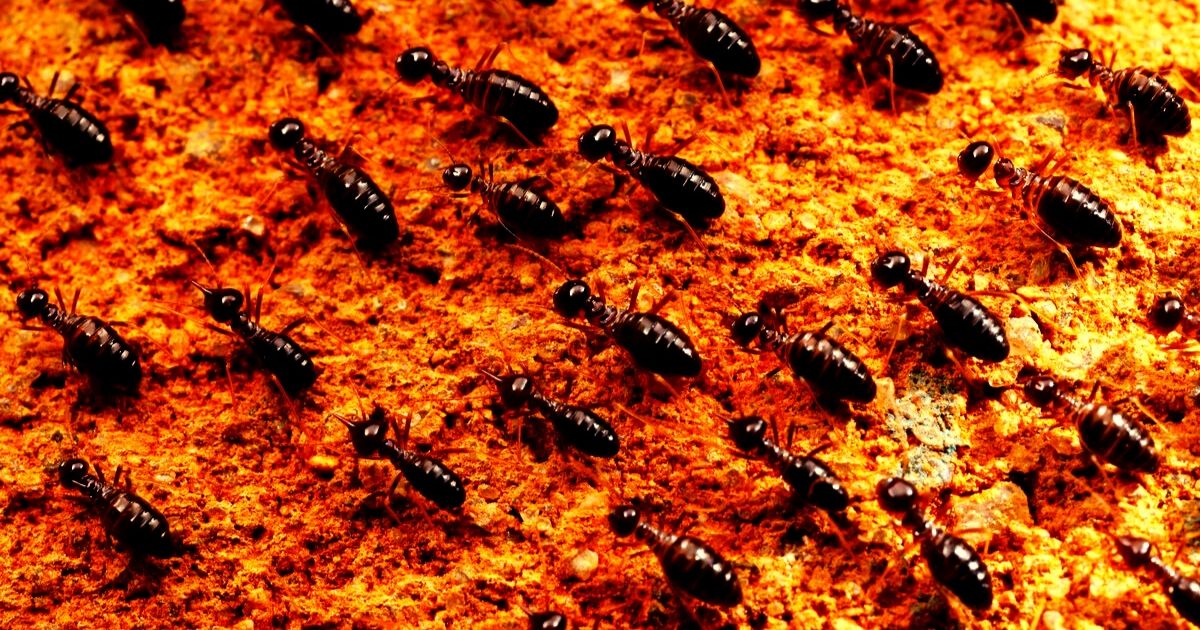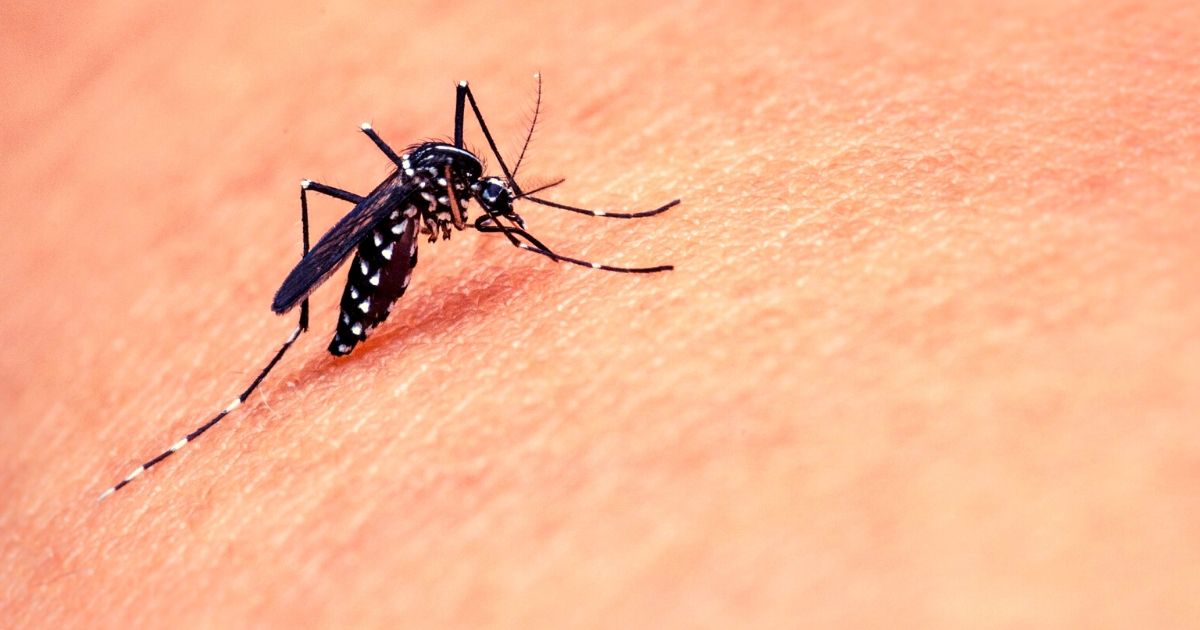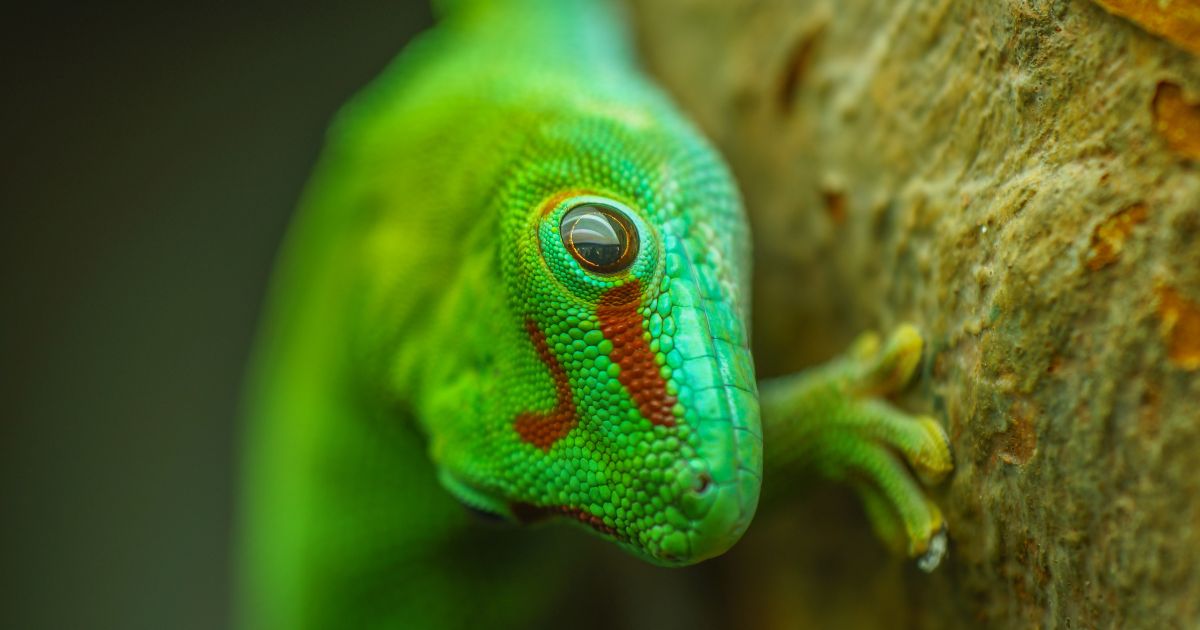The Ultimate Guide to Scorpions
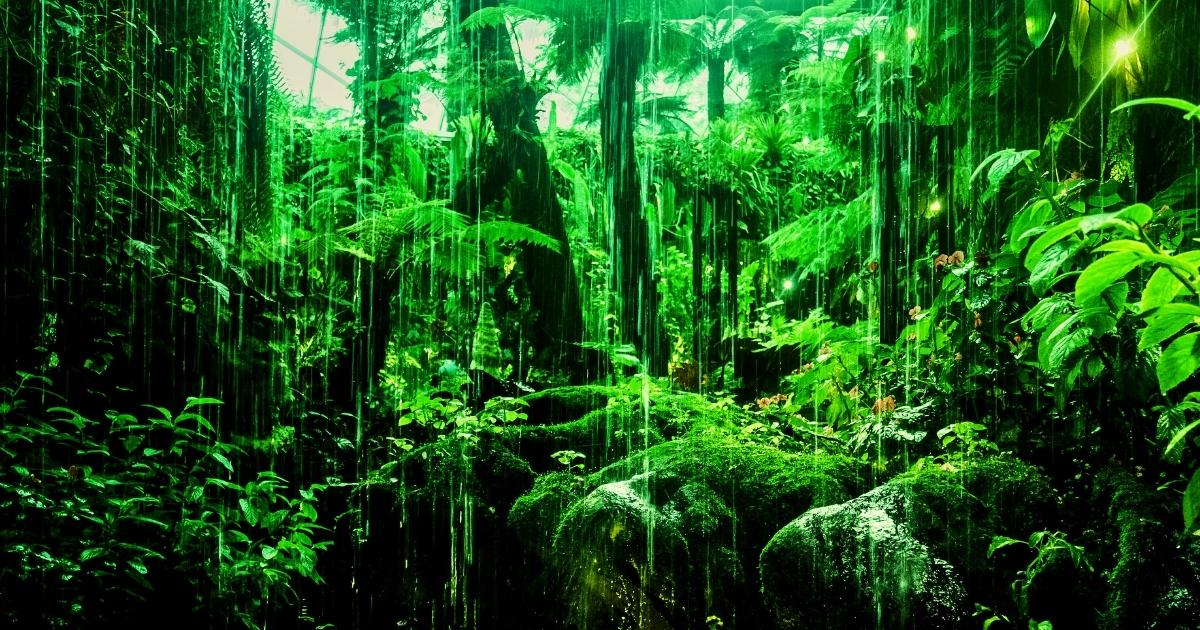
Scorpions are arthropods that are related to spiders. Some features of scorpions are that they have a long tail with a stinger on the end and a set of pincers on the front of the body. In this article, we discuss some interesting and useful facts about scorpions. There are scorpions in Singapore along with other stinging pests such as bees, wasps, and hornets. Scorpions occur in many different types of habitats including deserts, but in Singapore, they are most often found inhabiting forested areas.
Scorpion biology
Scorpions are predators that feed on other small creatures that they come across in the environment. Mostly they prey on insects and tiny arthropods, but larger-sized scorpions may even take small vertebrates such as lizards.
They have a flattened segmented body and jointed limbs. A scorpion also has four legs, a pair of pincers near the head area, and a tail with a stinger. The average size of a scorpion is about 6 cm.
They breed during the warm season or year-round in the tropics. The mating process involves a complex courtship ritual. Scorpions can mate many times and the females have live births. The average number of offspring is 25.
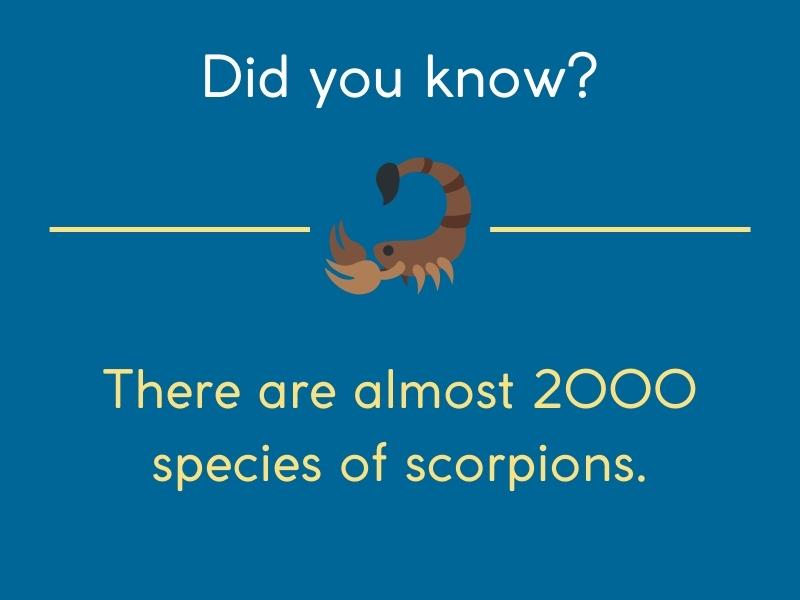
Types of scorpions
There are many different types of scorpions (almost 2000 species of scorpions) found in many habitats around the world. In Singapore, the most important species of scorpions are listed below next to the family name:
Family Buthidae
- Lesser brown scorpion – Isometrus maculatus
- Long-tailed scorpion – Lychas scutilus
Family Chaerilidae
Family Hemiscorpiidae
- Dwarf wood scorpion – Liocheles australasiae
Want to find out more about wildlife management in Singapore?
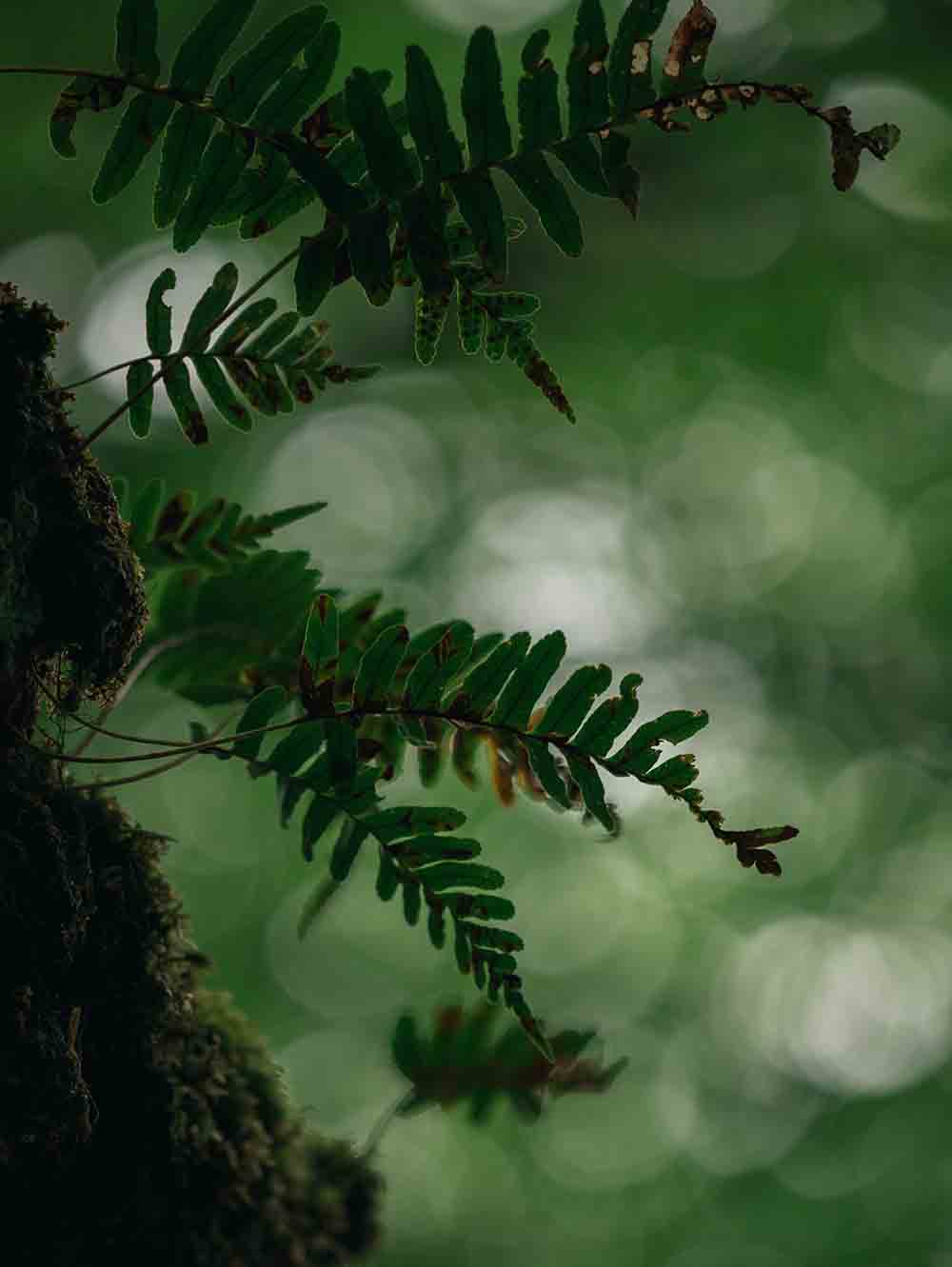
Do scorpions bite?
Scorpions do not bite normally, instead their defense mechanism is to sting. You should avoid touching and picking up a scorpion because you risk receiving a painful sting that may be harmful to you.
Are scorpions poisonous?
Scorpions are not considered poisonous; however, all species are venomous to some extent. This means that they contain venom in their tail which they inject when they sting someone. The venom of a scorpion is a toxic substance that directly affects the nerves or blood cells. The exact type and potency of the venom vary depending on the specific species of scorpion.
Did you know: Scorpions cause over 3000 human fatalities a year world-wide.
Are scorpions dangerous?
Scorpions can be deadly; they do cause over 3000 human fatalities a year world-wide. However, not all species are dangerous to humans. In many cases, the venom may not be dangerous for people.
There are a few that are more harmful to people. The most dangerous scorpions are in the two scorpion families: Scorpionidae and Buthidae. They are responsible for almost all cases of human injury.
Which are the most dangerous scorpions?
Although Scorpionidae looks more intimidating since they have larger pincers, it is actually the Buthidae that are more venomous, even deadly at times. The Buthidae have smaller pincers and a thicker tail than the Scorpionidae but the venom they produce is much stronger.
Many scorpions do not kill humans when they sting them but the sting can cause pain and swelling. Another concern is the possibility of an allergic reaction that can even lead to anaphylaxis.
The sting of any scorpion could cause anaphylaxis in vulnerable individuals. Anaphylaxis can quickly cause death, so it is best to rather avoid direct contact with scorpions. Even if you have never before had a dangerous allergic reaction it can still happen with any type of sting.
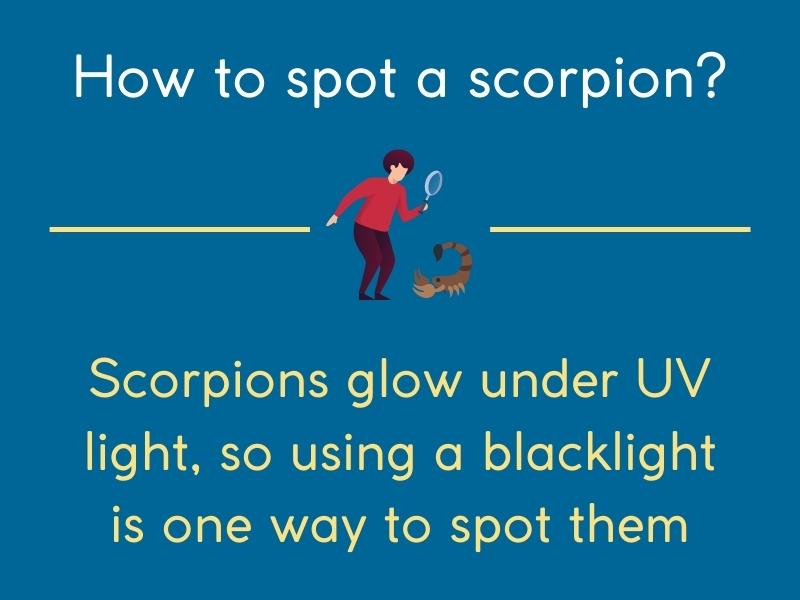
How to spot a scorpion
Scorpions are active at night and many show up under ultraviolet light, so using a blacklight is one way to spot them. They often hide under logs or fallen debris. In houses, you could potentially find them in crawl spaces and attics. Scorpions prefer darkened spaces in dwellings, such as cracks and joints where they can hide out during the day.
How scorpions can enter your home
Scorpions can enter a dwelling through small cracks and holes. These insects are flat-bodied and can even crawl under doors, so having weather-stripping in place is a good idea.
These arthropods are predators that feed on other arthropods including insects like crickets. An infestation of crickets or other insects in your home may attract scorpions looking for food. You may not even know you have a scorpion in the home until you happen to spot one.
It is not common to have many scorpions infesting a home. However, they can be dangerous to people and pets depending on what type they are.
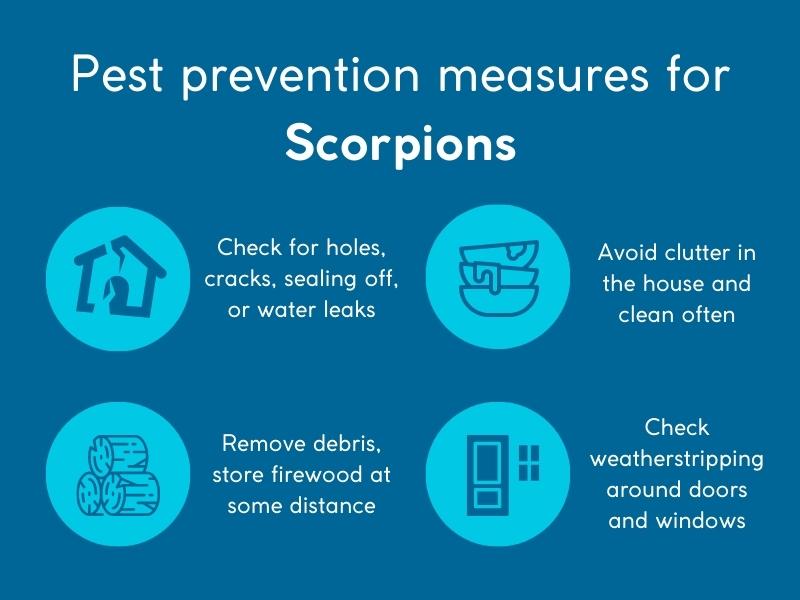
Pest prevention measures for scorpions
- It is better to prevent the entry of scorpions and other small pest insects into the house, to begin with. This can be accomplished by checking for holes and cracks and sealing off and repairing where needed.
- Make sure weatherstripping around doors and windows is in good shape.
- Check for water leaks since this attracts scorpions and other noxious insects like cockroaches.
- Avoid clutter in the house since this provides hiding places for scorpions.
- Clean the house often; this is a good way to notice if there are pests present.
- Remove debris close to the house since this can attract scorpions.
- Make sure firewood is being stored some distance from the house since this also will be attractive to scorpions and other pest insects.
- If you suspect a scorpion may be present, invest in a blacklight and search at night for any signs of the animal. They will glow under UV light and be easy to see.
Pest control measures for scorpions
Scorpions are usually simply directly killed by spraying them with insecticide. Fogging is not required unless you have a big infestation of some other type of pest like cockroaches.
Always be careful using insecticides in the home, especially if you have pets and small children.

Wildlife Intrusion? Let Us Help.
We offer fast and effective solutions to ensure a secure environment for your home or business while prioritizing wildlife protection.
Conclusion
Scorpions are arthropods that sting with their tail. The venom of many species is not a big concern to humans but pets and small children are at higher risk. Even though most species will not kill you it is wise to prevent scorpions from entering your home.
Frequently Asked Questions
Although scorpions and insects have some similarities, scorpions belong to the class of animals known as the Arachnids. This makes scorpions a distant relative of spiders.
First, scorpions use their claws to grab the prey; smaller victims get crushed and killed with the scorpion’s grip. Then, scorpions sting the prey with its tail to inject the venom.
Usually scorpions won’t attack people, unless they feel threatened. Their stinging is the defence mechanism against being attacked or getting crushed.
Scorpions are not considered poisonous; however, all species are venomous to some extent. Only some of the species produce the venom that is deadly.
The most dangerous scorpions are in the two scorpion families: Scorpionidae and Buthidae. They are responsible for almost all cases of human injury.
All scorpions will glow in the dark under a ultraviolet (UV) light, also known as a “blacklight”. This is caused by an unidentified substance in their skin.
In addition to deserts, scorpions can also be found in tropical and subtropical environments, such as grasslands, savannas, and forests.
Most scorpions hide under rocks, logs, clutter or boards. This is why you should avoid clutter and debris around and in your house, and make sure there are no holes or cracks for scorpions to hide.

